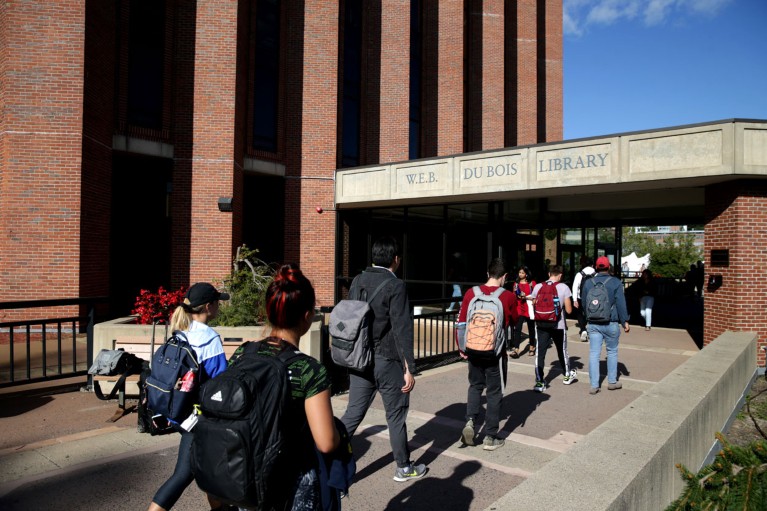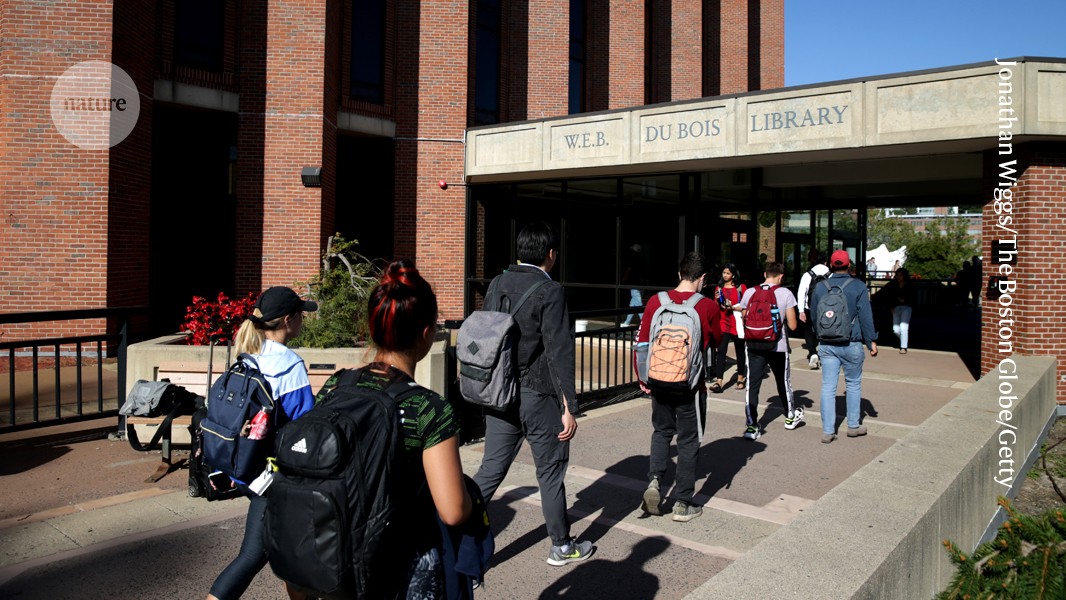
Roughly 1.3 million international students and recent graduates enrolled in work training are in the United States for the 2025–26 academic year.Credit: Jonathan Wiggs/The Boston Globe/Getty
International students in the United States have defied predictions of a huge downturn in their population. Data for the current academic year show that the number of international students — including PhD candidates and newly minted PhDs — has remained essentially flat, year-on-year.
The administration of US President Donald Trump has shaken up the landscape of higher education, revoking student visas, cutting funds to institutions and implementing travel bans for selected countries. As a result, many higher-education researchers had expected significant numbers of overseas students to turn away from US academia.
The great university shake-up: four charts show how global higher education is changing
In July, NAFSA: Association of International Educators, a non-profit organization in Washington DC, predicted that the number of overseas students in the United States would decline by 15% between the previous academic year and this one. And in October, The New York Times reported a 20% drop in the number of students arriving in the United States in August 2025 compared with August 2024, a finding based on data from the US Department of Commerce.
But data released by the US Department of Homeland Security (DHS) for September and October show almost no change in the population of international students and recent graduates in the United States between this year and last — and specialists say these data are more reliable than others.
“It doesn’t appear to be as catastrophic as had been originally feared,” says Chris Glass, a higher-education researcher at Boston College in Massachusetts.
Data points
The DHS statistics, which are part of a database called the Student and Exchange Visitor Information System (SEVIS), track students enrolled in educational institutes and recent graduates gaining work experience in a programme called optional practical training (OPT). OPT is one of the largest foreign talent pipelines to the United States, feeding thousands of people into Amazon, Google and other leading companies. It is key for people doing PhDs in science, technology, engineering and mathematics (STEM) topics: between 2010 and 2022, 76% of recent graduates took part in it.
According to SEVIS data, roughly 1.3 million international students and OPT participants are in the United States for the 2025–26 academic year — about the same as the number for the 2024–25 academic year. The total number of doctoral students also remained nearly the same year-on-year (see ‘Surprising stability’).

Source: SEVIS, NAFSA: Association of International Educators
SEVIS data do not distinguish between recent graduates involved in OPT and students still enrolled in educational institutes. Glass says that, given recent trends, the number of OPT participants might have grown by about 15% between 2024 and 2025. If so, that would mean a “modest single-digit enrolment decline”, leading the total number of students and graduates to remain flat.
What, then, might explain the 20% decline in student arrivals in August recorded by the commerce department? The August arrival data “aren’t all that great of a proxy” for the international-student population, says Violet Buxton-Walsh, an immigration researcher at the Institute for Progress, a non-profit think tank in Washington DC. Many international students could have heeded advice to stay in the United States between the end of the 2024–25 school year and the start of the 2025–26 year. If they did, they would not have been included in the August arrivals data, Buxton-Walsh says. Others might have arrived in September rather than August because of visa delays.
The relatively steady numbers might seem puzzling, given the headlines about the Trump administration’s anti-immigration actions. But “international students are incredibly resilient”, says Melissa Whatley, a higher-education researcher at the William & Mary School of Education in Williamsburg, Virginia. “They’re going to attend institutions and earn degrees under circumstances that we think might deter them.”



